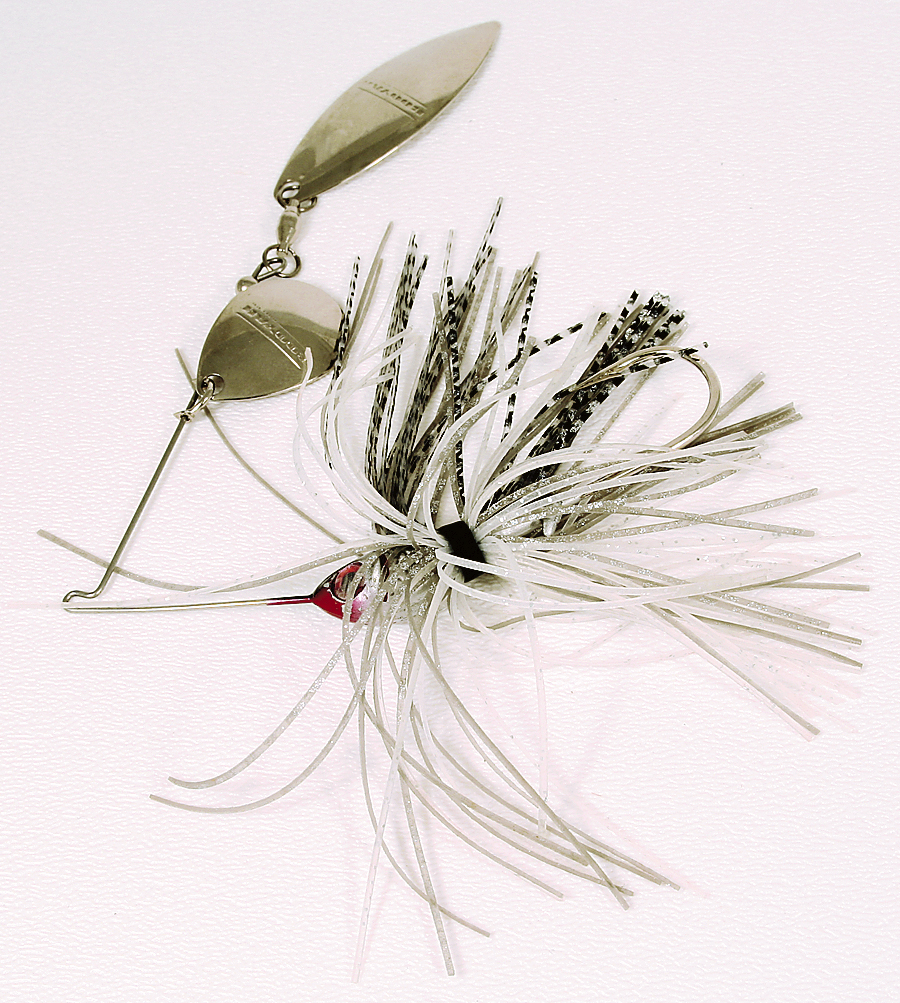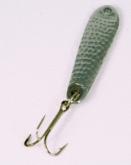Fall’s fab five
Five sure-fire lures for tempting autumn bass

Ah, yes, it’s that time of year again. The first few cold fronts, or “blue triangles,” are rolling across the U.S. weather map, wringing out summer’s humidity and leaving a crisp nip in the early morning air.
Autumn’s first nip and waning daylight hours spark the migration of birds, animals and fish – specifically shad and other types of baitfish.
The dog days of summer often scatter shad far and wide across a reservoir, and bass follow suit. But with the first cool snaps of fall, the top layer of water and the back ends of tributaries begin to cool, and shad start moving up onto the shallow flats and into the creek ends for a breath of fresh water, so to speak.
As a result, fall bass patterns on many lakes and reservoirs revolve around the shad or baitfish, which congregate and move with the cooler weather.
For this reason, shad-imitating lures are a great choice for the last four months of the year, and it’s hard to go wrong with fall’s fabulous five – spinnerbait, shallow-running crankbait, topwater, soft jerkbait and jigging spoon.
Fall is also a time to change fishing strategies a bit. In general, fall fishing requires covering more water than fishing in the spring or summer. Unlike spring, when bass are staging or spawning in certain areas, fall is a time when fish are constantly on the move, following shad.
1) Spinnerbaits
Fall and spinnerbaits go together like baseball games and hotdogs. But leave those big 3/4-ounce chartreuse spinners with No. 5 and No. 6 willows at home. Gaudy spinnerbaits are great in the spring when the water is typically higher and stained and the fish are defending the shallows from predators. In the fall, however, reservoirs are usually dropping toward winter pool and the water is clearer. Smaller spinnerbaits – 1/4- to 3/8-ounce models with smaller No. 3 and No. 4 blade combinations – tend to work better. This is a better time for the translucent, metal-flake skirt colors than for the bright whites and chartreuses. In clearer waters, try faster retrieves and burning spinnerbaits around small points in the backs of creeks.
Fall is also a great time to break out the shallow-running crankbaits. Shallow runners that dive 2 to 4 feet, including rattling lipless crankbaits, are great tools for searching vast flats in the backs of creeks. If you find an isolated target up on the flat, such as a laydown log, brush pile or piling, try making repetitive casts to it. Stick with shad colors over the springtime chartreuses, oranges and reds.
3) Topwaters
 Fall bass are notorious for feeding on top, so it’s a good idea to have a topwater loaded and cocked on the deck at all times. If bass come up schooling, you will be in a position to take advantage of the melee. Walking baits, like a Zara Spook or a Sammy, are perfect for this application. Poppers and chuggers will work, too, but keep them moving – walking, spitting and gurgling. Postspawn bass may like topwaters pausing or even sitting still, but fall bass like them moving, as if a shad is fleeing for its life. Also, don’t be reluctant to throw a topwater when there is no surface activity. Sometimes getting one fish to come up on a topwater can get a school of bass activated.
Fall bass are notorious for feeding on top, so it’s a good idea to have a topwater loaded and cocked on the deck at all times. If bass come up schooling, you will be in a position to take advantage of the melee. Walking baits, like a Zara Spook or a Sammy, are perfect for this application. Poppers and chuggers will work, too, but keep them moving – walking, spitting and gurgling. Postspawn bass may like topwaters pausing or even sitting still, but fall bass like them moving, as if a shad is fleeing for its life. Also, don’t be reluctant to throw a topwater when there is no surface activity. Sometimes getting one fish to come up on a topwater can get a school of bass activated.
4) Soft jerkbaits
 Soft jerkbaits, like Zoom Flukes, are excellent shad imitators as well. If schooling bass go down and quit coming all the way up for a topwater, try letting a soft jerkbait sink down, and lightly twitch or walk the bait 2 or 3 feet under the surface.
Soft jerkbaits, like Zoom Flukes, are excellent shad imitators as well. If schooling bass go down and quit coming all the way up for a topwater, try letting a soft jerkbait sink down, and lightly twitch or walk the bait 2 or 3 feet under the surface.
Since this is an open-water technique, using an exposed hook, or even rigging the Fluke on a light jighead, will assure solid hook-ups from fish that just slash at the bait.
5) Jigging spoon
A jigging spoon is the dark horse of fall’s fabulous five. A spoon is not something that covers a lot of water, but getting on fish with a spoon in hand can be some of the fastest action bass fishing has to offer.
 Beginning bassers are often intimidated by the thought of jigging a spoon down to depths of 30 or 40 feet, but jigging a spoon is not that complicated.
Beginning bassers are often intimidated by the thought of jigging a spoon down to depths of 30 or 40 feet, but jigging a spoon is not that complicated.
What are the right conditions for jigging a spoon? A blacked-out depth finder – especially if you are fishing around schooling fish.
If your depth finder is blacked out from top to bottom, it usually means aggressive bass are pushing shad schools toward the top. Simply drop a 1/2-ounce spoon down, start jigging and hang on.
